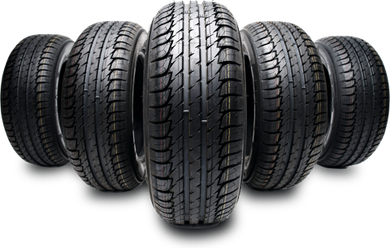Morris Tire and Alignment: Your Trusted Resource for Reliable Service
Morris Tire and Alignment: Your Trusted Resource for Reliable Service
Blog Article
Tire Solution: Comprehending Tire Stress Tracking Equipments
Understanding Tire Pressure Monitoring Equipments (TPMS) is an essential element of keeping ideal vehicle performance and security when driving. With improvements in vehicle innovation, TPMS has actually become a standard attribute in modern-day vehicles, giving real-time info on tire stress degrees. Delving much deeper into the ins and outs of TPMS, one can discover the different components that make up this system and the value of each in making certain exact surveillance. From straight to indirect TPMS systems, the landscape of tire stress tracking is diverse, each with its special set of benefits and factors to consider. Remain tuned to untangle the intricacies of TPMS, from upkeep suggestions to the indisputable advantages of keeping your tires properly pumped up. tire shop morris.

Significance of TPMS
The importance of Tire Pressure Surveillance Systems (TPMS) depends on their capability to enhance automobile safety and performance through real-time surveillance of tire pressure degrees. Maintaining the correct tire stress is essential for making sure optimal handling, braking, and total security of a car. TPMS supplies motorists with immediate responses on any underinflated or overinflated tires, permitting prompt changes to be made.
Elements of TPMS
Comprising numerous necessary components, a Tire Pressure Monitoring System (TPMS) functions as an innovative security attribute in modern-day cars. The primary parts of a TPMS include sensing units, a control component, and a caution indication. Sensors are normally located in the tire shutoff stem or affixed to the wheel assembly, where they determine tire pressure and send data to the control component. If it identifies significantly low stress in any of the tires, the control module processes this info and sets off a warning. The caution sign, commonly a symbol on the dashboard, informs the motorist to examine the damaged tire or tires. Some advanced TPMS versions also present the actual tire pressure readings for each and every tire, providing vehicle drivers with real-time details to make sure optimum tire efficiency and security. By monitoring tire stress continually, TPMS helps protect against crashes, minimizes tire wear, and improves gas performance, making it an important component for vehicle security and performance.
Types of TPMS

On the various other hand, indirect TPMS relies upon the vehicle's wheel speed sensing units to keep an eye on tire pressure. This system finds underinflation by comparing the rotational speeds of the wheels. Indirect TPMS is less pricey than straight TPMS, as it utilizes existing sensing units within the vehicle.
While straight TPMS uses a lot more precise readings, indirect TPMS is less complex in style and commonly requires much less maintenance. Both systems have their restrictions and advantages, and the option between them commonly depends on aspects such as cost, vehicle make, and individual choice. Comprehending the differences in between these two kinds of TPMS can assist car proprietors make informed decisions relating to tire upkeep and safety and security.
TPMS Upkeep Tips
Conduct routine checks on the tire pressure levels and contrast them with the TPMS readings to guarantee they are consistent. Throughout tire rotation or replacement, make sure that the TPMS parts are managed very carefully to protect against any type of prospective damages. If the TPMS warning light brightens on the control panel, attend to the concern without delay by checking the tire pressures and the general system for any type of mistakes.
Advantages of Appropriate Tire Pressure
Preserving proper tire pressure, as stressed in TPMS Maintenance Tips, is critical for reaping the various benefits connected with ideal tire pressure degrees. One of the primary advantages of preserving the appropriate tire pressure is improved fuel efficiency. When tires are properly blown up, there is much less moving resistance, bring about much better gas economic climate. Furthermore, correct tire pressure ensures also tire wear, expanding the life-span of the tires and advertising much safer driving problems. With the right tire pressure, lorries likewise have much better handling and click over here now grip, particularly in adverse weather. great site This can enhance total driving performance and security for the motorist and travelers. Maintaining optimum tire stress can add to a smoother and a lot more comfortable ride by lowering resonances and noise caused by underinflated tires. To conclude, the benefits of correct tire stress exceed simply tire durability; they encompass boosted fuel efficiency, enhanced safety, better car performance, and overall driving comfort.
Final Thought
In verdict, recognizing tire pressure monitoring systems (TPMS) is vital for maintaining optimal tire stress and ensuring lorry safety and security. By recognizing the significance of TPMS, knowing with its parts, knowing the different kinds readily available, adhering to appropriate upkeep pointers, and realizing the advantages of preserving correct tire pressure, drivers can boost their driving experience and extend the life expectancy of their tires. Correct tire pressure is crucial to risk-free and effective lorry operation.

Report this page